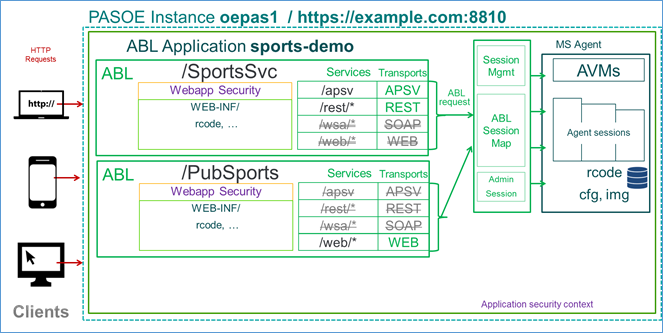I have installed and looked around in the New 11.7 and finds it Nice. Though I Wonder a bit about the following:
1. When installing, I am asked about Webspeed and Webserver.
q: Is it so that 11.7 classic still uses external webserver and that I need to install webspeed and a external webserver as ie. Apache2?
2. Do we create one PAS instance for each Application? ( I do belive that, but just wondering what we uses the webapps that is instances under each PAS server?
If you have a PASOE instance now (lets call it oepas1) and you want to add another ABL Application, do this:
cd <path-to>/oepas1
bin/tcman deploy $DLC/servers/pasoe/extras/oeabl.war NewABLAppName
The NewABLAppName at the end of the command is the thing that will create this new ABL Application and correctly modify the openedge.properties
now you can access the ROOT oepas1 ABL application with http://host:port/web/...
and the NewABLAppName with host:port/.../...
HTH, Roy
Hi,
When you select Webspeed as a component while installation, it will ask you for a WebServer. Just to support your older classic Webspeed Applications.
In a PASOE Instance, you can create multiple WebApplications, where each of them can be considered like a module for deploying your Application code. They all share the same agent,database and event procedures.
In-case you would like to have different database and event procedures for your Applications, then you have to create ABL Applications. ABL Applications are logically mapped to the WebApplications and each of them will have its own session manager,agents,database and event procedures.
To create a new WebApp for default ABL Application(which would be your instance name), you do
tcman create -a myWebApp $DLC/servers/pasoe/extras/oeabl.war
To create a new WebApp for a new ABL Application, you would do
tcman create -a myWebApp $DLC/servers/pasoe/extras/oeabl.war myABLApp
Once you do this, you will see the difference in openedge.properties file and the log files. Each ABL Application will generate its own session-manager and agent log.
When you are saying webApplications, do you mean "Progress Application Server"? When you are saying ABL Applications, is that also "Progress Application Server" (PAS)?
As I understand, a PAS can have database Connections and several transporthandlers (like REST,SOAP,WEB,APSV). If I create a PAS session and Calls it
pasMyApplication, it is possible to add code under /pasMyApplication/openedge and also add code to /pasMyApplication/webApps/WEB-INF/openedge, and further more it is possible to add an instance (myWebApp) that will be add under webApps like /pasMyApplication/webApps/myWebApp/openedge.
To be honest, I find it a bit confusing, but it is probably made to be very flexy... but where could I find some examples of use?

Peter, thanks, but I may be a bit thick headed... so IF I have the following:
The Picture shows one PASOE Instance oepas1, and two ABL Applications. How do you add an extra ABL Application to OEPAS1 ?
Or is it so that OEPAS1 is the ABL Application and that I need two PASOE instances? hmmmm
or do I have to manually enter stuff in the openedge.properties ? To be honest, I find it very confusing :-/
If you have a PASOE instance now (lets call it oepas1) and you want to add another ABL Application, do this:
cd <path-to>/oepas1
bin/tcman deploy $DLC/servers/pasoe/extras/oeabl.war NewABLAppName
The NewABLAppName at the end of the command is the thing that will create this new ABL Application and correctly modify the openedge.properties
now you can access the ROOT oepas1 ABL application with http://host:port/web/...
and the NewABLAppName with host:port/.../...
HTH, Roy
Thanks Roy :-) so it has to be done with tcman.sh.... that was another good think to know... I was looking for that in the web management ....